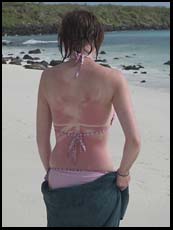
The Galapagos
part of "A Photographer's Guide to Ecuador, the Galapagos, and Peru" by Philip Greenspun in December 2004Home : Travel : Ecuador and Peru : One Section
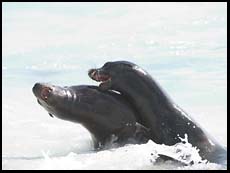

|
The Galapagospart of "A Photographer's Guide to Ecuador, the Galapagos, and Peru" by Philip Greenspun in December 2004Home : Travel : Ecuador and Peru : One Section |

|
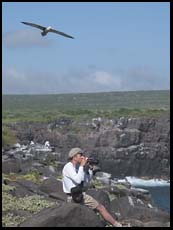 The volcanic Galapagos Islands rose from the sea floor starting around
5 million years ago. They are separated from the continent of South
America by 600 miles of ocean and therefore the species have evolved
separately from their forebears on the mainland. The islands were not
visited by humans until approximately 500 years ago. Thus the
wildlife has not had time to evolve a fear of human beings and can be
approached and photographed very closely. Here is a place where you
can take a bird's portrait with a 50mm lens.
The volcanic Galapagos Islands rose from the sea floor starting around
5 million years ago. They are separated from the continent of South
America by 600 miles of ocean and therefore the species have evolved
separately from their forebears on the mainland. The islands were not
visited by humans until approximately 500 years ago. Thus the
wildlife has not had time to evolve a fear of human beings and can be
approached and photographed very closely. Here is a place where you
can take a bird's portrait with a 50mm lens.
Even if you're not interested in the specific oddities of the Galapagos, the biogeography of islands is worth studying because to a large extent that's what all of Earth's biogeography will look like in 100 years or so. Ecologists distinguish between two types of islands. The first are volcanic oceanic islands such as the Galapagos that sprung up from nowhere and collect species only by immigration from the air and water. The second are "land-bridge" islands such as Madagascar or Bali that were once connected to a continent but split off with a sampling of whatever wildlife happened to be around at the time. Because they are small and have small populations islands are subject to vastly more extinctions than continents.
There are four ways to see the Galapagos:
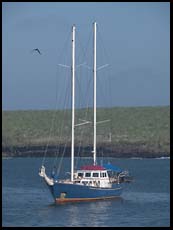
I booked my cruise as part of a multi-week trip through Wildland Adventures. They put me on the Eric, a 20-person boat run by one of the oldest and best companies in the Galapagos business. The naturalists on my cruise were former rangers from the Galapagos National Park and had a superb command of geology, geography, biology, and the English language.
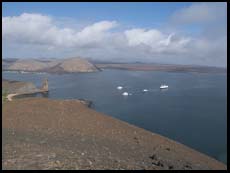 Landing locations and times are regulated by the national park
authorities. Generally the schedule looks something like the
following:
Landing locations and times are regulated by the national park
authorities. Generally the schedule looks something like the
following:
A standard Galapagos cruise is fine for getting magazine-quality animal portraits. If you want to take landscape photos near sunset and sunrise you may want to investigate a special cruise for photographers where you get up earlier and jump right into a dinghy before breakfast.
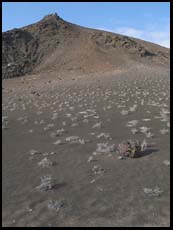 Because it is so sunny and you tend to be out in mid-morning and
mid-afternoon you don't really need to bring a tripod if you're using
standard 35mm or digital cameras. You'll definitely miss a few photos
without one but most of the time handholding will work just fine. For
capturing birds in flight and headshots on the ground you'll want at
least a 400mm lens (35mm perspective). The images on this page were
taken with an Olympus E1 5-megapixel single-lens reflex camera and two zoom lenses
with a total range of 28-400mm (35mm equivalent). Often it would have
been nice to have a 20mm or wider lens and sometimes it would have been
nice to have a 600mm lens. On the other hand, plenty of the best images
were made closer to 50mm.
Because it is so sunny and you tend to be out in mid-morning and
mid-afternoon you don't really need to bring a tripod if you're using
standard 35mm or digital cameras. You'll definitely miss a few photos
without one but most of the time handholding will work just fine. For
capturing birds in flight and headshots on the ground you'll want at
least a 400mm lens (35mm perspective). The images on this page were
taken with an Olympus E1 5-megapixel single-lens reflex camera and two zoom lenses
with a total range of 28-400mm (35mm equivalent). Often it would have
been nice to have a 20mm or wider lens and sometimes it would have been
nice to have a 600mm lens. On the other hand, plenty of the best images
were made closer to 50mm.
For want of having anything more profound to say about these islands,
here are some favorite pictures from a weeklong cruise, arranged by
island. Notice that the emphasis is on tourists in the landscape as
opposed to pristine picture-postcard views. The objective here is to
show the Galapagos as a tourist would be likely to experience it rather
than as an idealized wilderness.
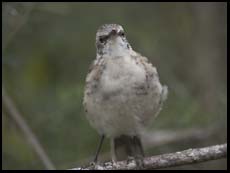
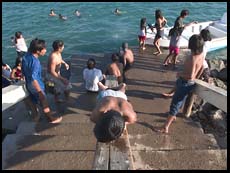
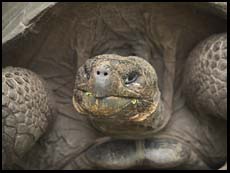
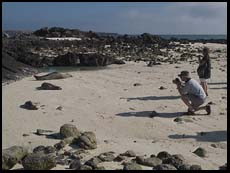
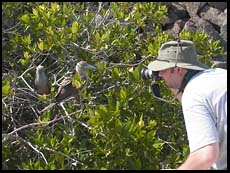
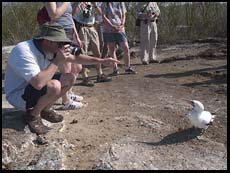
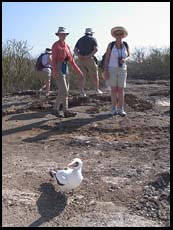

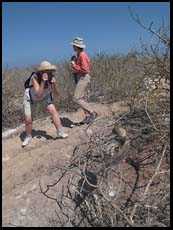
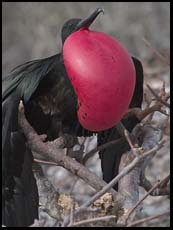
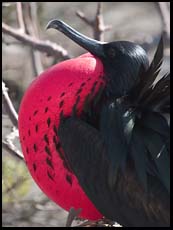
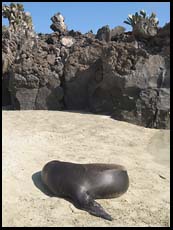
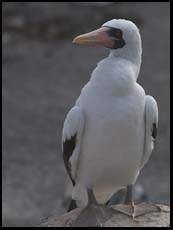
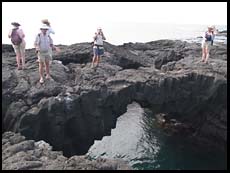
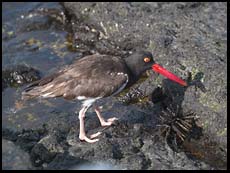
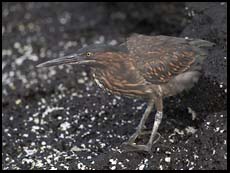
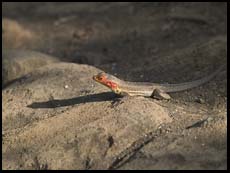
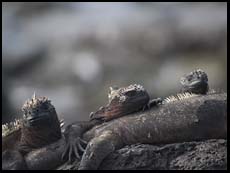
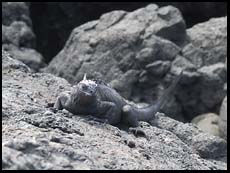
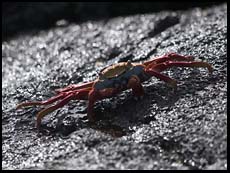
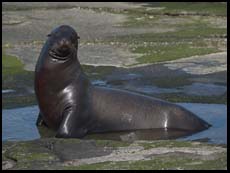
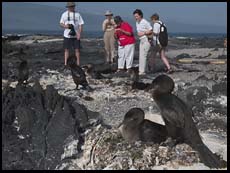
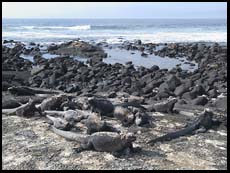
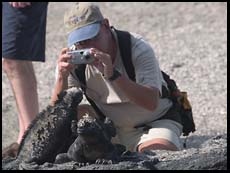
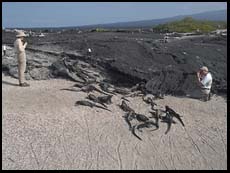
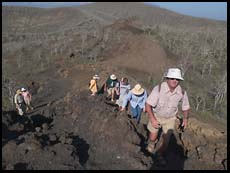
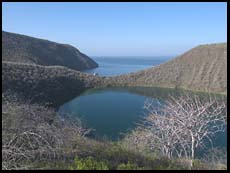
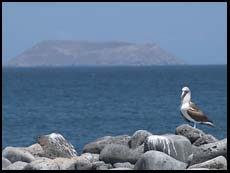
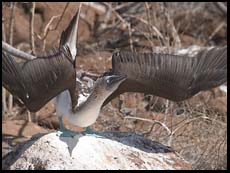
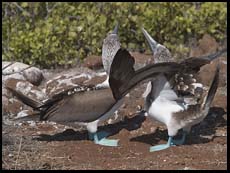
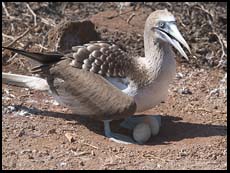
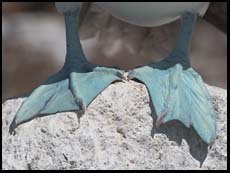
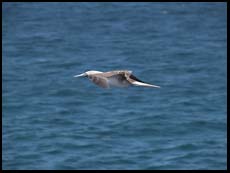
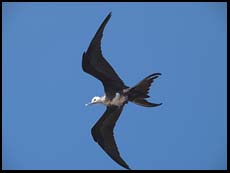
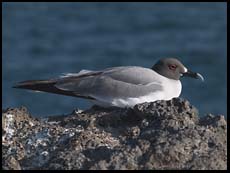
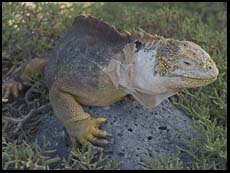
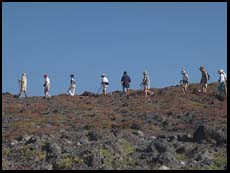
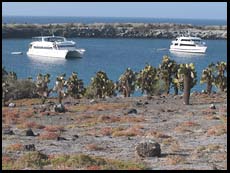
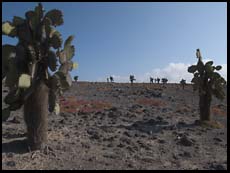
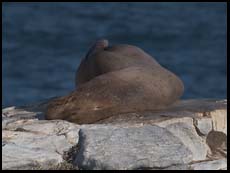
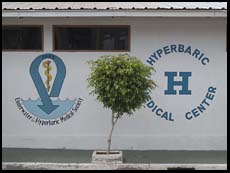
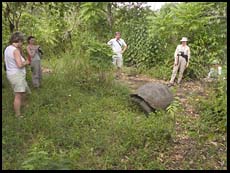

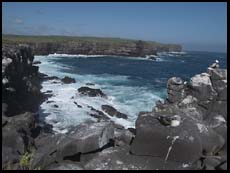
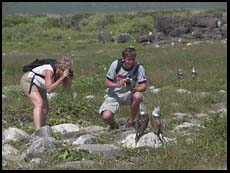
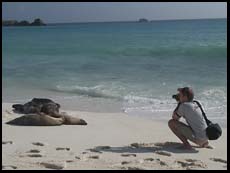
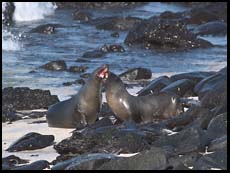
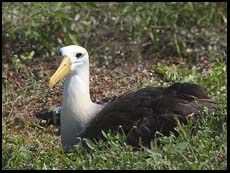
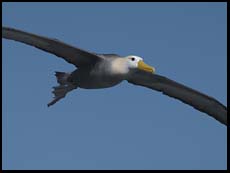
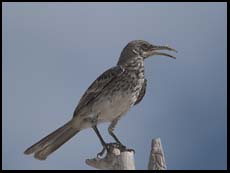
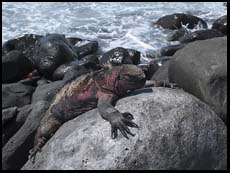
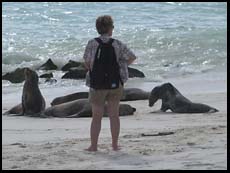
 Back up to main Ecuador, Peru article.
Back up to main Ecuador, Peru article.